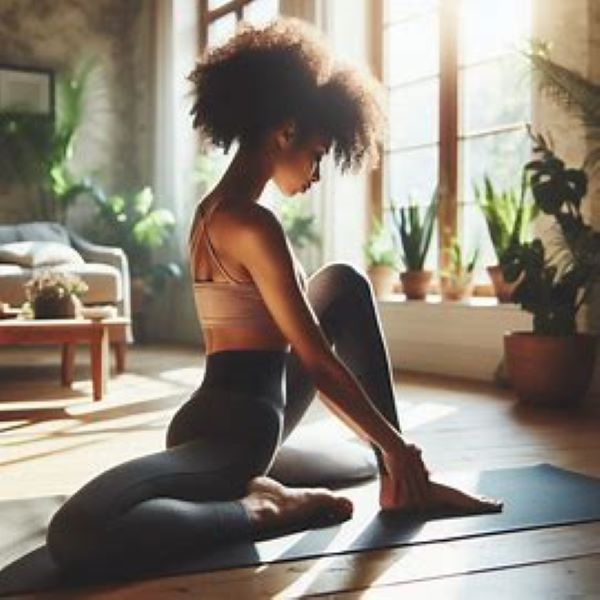Paschimottanasana, known in English as the Seated Forward Bend, is a classic yoga pose that involves stretching the entire back of the body from the heels to the head. This asana is renowned for its calming effects and its ability to enhance flexibility and strength. It is often included in yoga sequences to promote relaxation and improve overall well-being.
History
Paschimottanasana is derived from the Sanskrit words “Paschima” meaning “west” or “back” and “Uttana” meaning “intense stretch.” This pose has been practiced in traditional Hatha Yoga for centuries and is considered one of the fundamental asanas. It is mentioned in ancient yogic texts like the Hatha Yoga Pradipika and is highly valued for its therapeutic benefits.
How to Do Paschimottanasana
To perform Paschimottanasana correctly, follow these steps:
- Starting Position: Sit on the yoga mat with your legs extended straight in front of you. Keep your back straight and your feet together, toes pointing up.
- Inhale and Lengthen: Inhale deeply, lengthening your spine and raising your arms overhead.
- Exhale and Fold Forward: As you exhale, hinge at your hips and slowly bend forward, reaching for your feet. Try to keep your spine long and avoid rounding your back.
- Hold the Feet: If possible, grasp your feet or toes with your hands. If you cannot reach your feet, hold your ankles or shins. Use a strap around your feet if needed.
- Deepen the Stretch: With each inhale, lengthen your spine further. With each exhale, gently deepen the stretch, bringing your chest closer to your thighs.
- Relax and Breathe: Hold the pose for 30 seconds to 1 minute, breathing deeply and evenly. Focus on relaxing your body and mind.
- Release the Pose: To come out of the pose, inhale and slowly lift your torso back to the starting position, raising your arms overhead. Exhale and lower your arms.
Health Benefits
Regular practice of Paschimottanasana offers numerous health benefits, including:
- Improving Flexibility: Stretches the hamstrings, spine, and shoulders, enhancing overall flexibility.
- Strengthening Muscles: Strengthens the back and abdominal muscles, improving posture and core stability.
- Stimulating Organs: Stimulates the kidneys, liver, and digestive organs, aiding in digestion and detoxification.
- Relieving Stress: Calms the mind and reduces anxiety, promoting a sense of relaxation and well-being.
- Improving Circulation: Enhances blood circulation, especially in the lower back and legs.
Who Should Do Paschimottanasana
Paschimottanasana is beneficial for most individuals, especially those who:
- Seek to improve their flexibility and posture.
- Want to relieve stress and calm the mind.
- Experience digestive issues or want to improve their gut health.
- Are looking for a gentle yet effective way to stretch their back and hamstrings.
Also, read: Quickly Learn all about Marjariasana- Cat Pose
Who Should Not Do Paschimottanasana
Certain individuals should take precautions or avoid practicing Paschimottanasana:
- Those with severe back or spinal injuries should consult with a healthcare provider before performing this pose.
- Individuals with hamstring or hip injuries may need to modify the pose or avoid it altogether.
- Pregnant women should avoid deep forward bends, especially in the later stages of pregnancy.
- People with asthma or respiratory conditions should practice with caution, ensuring they can breathe comfortably.
Precautions to Take
When practicing Paschimottanasana, keep these precautions in mind:
- Avoid forcing the stretch; listen to your body and move within your comfortable range of motion.
- Keep your spine long and avoid rounding your back to prevent strain.
- Use props like straps or blocks to assist in the pose if needed.
- Practice on an empty stomach or wait at least 2-3 hours after a meal.
- If you experience any pain or discomfort, come out of the pose and rest.
References and Sources
By incorporating Paschimottanasana into your regular yoga practice, you can enjoy its numerous benefits while enhancing your flexibility, strength, and mental clarity. Always practice mindfully and consult with a yoga instructor if you have any health concerns.





